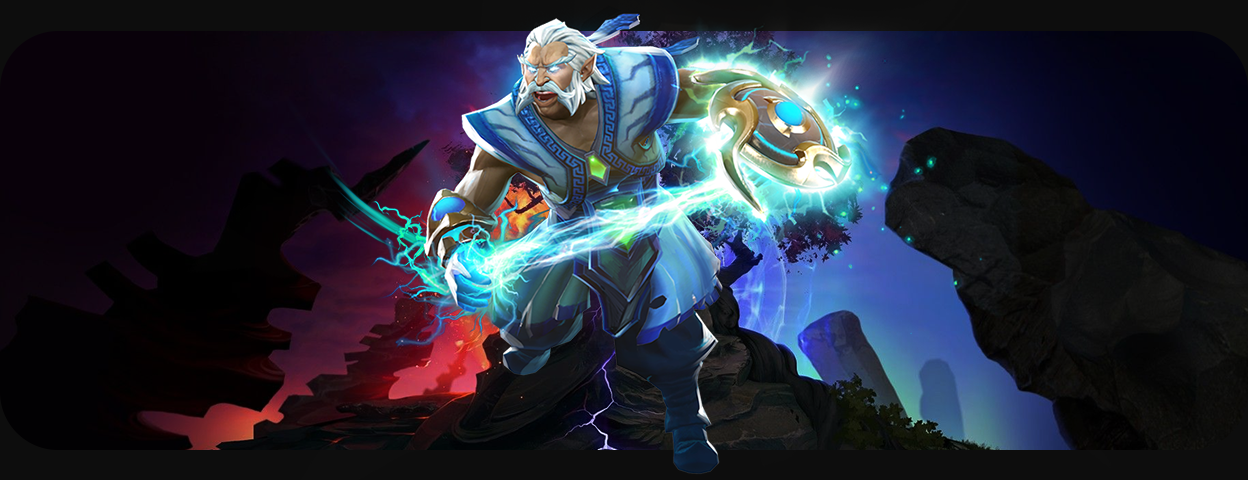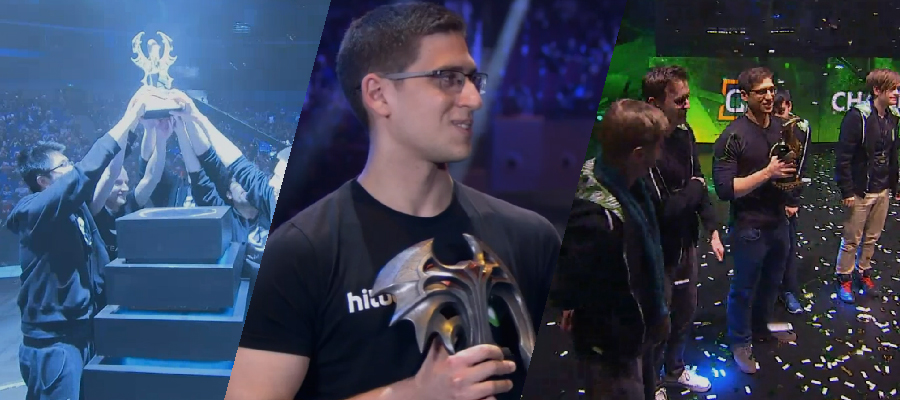
Dota’s Past, Present, and Precarious Future
Dota 2 was at one point the shining example of what an esport could be.
It boasted the largest prize pools in the world, the most nail biting finales, the most epic highlights, and saw new competitors rising to challenge the established greats on a regular basis. Today the scene features limited new talent, a seasonal league which the competitors hardly care to participate in, and a single tournament that carries more weight than all others throughout the year combined.
Growing the game
Dota 2’s growth was explosive after its beta ended in July of 2013. While Valve had already run two million-dollar “Internationals” to kickstart the burgeoning esports scene, the game moving from invite only to free to play was the big step that allowed the masses to jump on board this roaring hype train. In the years following, esports would become a household term as a bit of a virtual revolution took place. Dota 2 was leading the pack, and nothing illustrated it more clearly than the boom in prize pools over the subsequent years. In 2013 the Dota 2 pro scene awarded its top contenders a total just north of $4,000,000, then awarded over $15,000,000 in 2014, followed by $28,000,000 in 2015. Every month that went by, a new event was announced, a new sponsor was on board, and a new player topped the charts of esportsearnings.com.
This was partially due to the laissez-faire attitude of its publisher Valve, who appeared to want very little to do with moderating the world of Dota esports aside from its singular annual tribute to the game, The International. While publishers like Riot and Blizzard clamoured for control of their esports ecosystems, attempting to bring them in-house and franchising out slots in their tournaments, Valve gave carte blanche to third parties to run wild with the game. There were no fees to license the game, no revenue shares with the publisher, and no rules or restrictions to adhere to. If you were an organizer that wanted to run a Dota event, you were absolutely free to. This spurred an ecosystem of eager partners, chomping at the bit to promote Valve’s game in order to grab a piece of the pie. ESL, PGL, Dreamhack, MLG, Beyond The Summit, Starladder and more became keystone organizers in the scene, delivering hundreds of thousands of viewer hours to sponsors, and just as many dollars to players.

Did The International get too big?
There was only one problem though. As this growth continued, Valve continued to grow its contribution to the scene, The International. Each year, Valve crowdfunded the prize pool, leveraging the now-popularized “Battlepass” system we see in games, and splitting the revenue between themselves, and TI.
As the prize pool ballooned to unheard of proportions, so too did the importance of the event itself to the teams competing each year. This unfortunately led to a myriad of predictable outcomes. Over time, it became every team’s singular goal to win The International. While in years previous it was a prestigious achievement and a hefty chunk of cash, from 2017 and beyond, pursuing the aegis of champions with reckless abandon was the only financially sensible thing to do. At an all-time low, The International accounted for 62% of prize money in the Dota 2 scene in 2016. The Winners of The International that year, Wings Gaming, took home just over $9,000,000, 23% of the total money available in that year.
In a year-long season with 19 notable tier 1 events with LANs, a single two-week event held over half of the season’s cash, and awarded nearly a quarter of it to a single team. This was the best case scenario as well. Looking a few years forward to 2019, there was $40,000,000 up for grabs in that year, with $34,000,000 (84%) of it being locked up in TI. The winners that year, OG, would take home over $15,000,000, more than double the amount that was available to all other teams in all other events throughout the season.
With all eyes on a single event, the scene’s priorities began to change. Sponsors and organizations started worrying less about appearances at mid-season events, and simply focused on finding their way onto the TI mainstage. Rather than investing in a team throughout a season, many esports orgs simply found strong contenders and bid on their sponsorship rights as TI approached, opting only to contract the team for a month or two before releasing them again.
Teams began focusing only on how to optimize their potential for TI, which led to many ugly roster shake ups with players being left teamless mere minutes before roster locks, and teams reforming nearly constantly throughout the year. Event organizers were left at the mercy of Valve, trying to find ways to remain relevant as more of the year became seen as “TI preparation” and their somewhat static prize pools based in sponsorship dollars paled in comparison to Valve’s ever-growing crowd funding.

Despite the drastic shift, some concessions were made along the way. Valve introduced ways for organizers to award Qualifying Points to teams as they worked towards TI, and even offered ways for organizers to have their prize pools matched, provided they met certain minimums. Roster locking and point attribution per-player were introduced to discourage frequent roster changes, and a standardized schedule policed by Valve prevented organizers from fighting over calendar days for the attention of top teams. There were strides made to tame the beast that the Dota Pro Circuit had become, but the elephant in the room loomed large.
Despite all of the qualifying points and league play scattered throughout the year, the fact remained that placing reasonably at TI meant more than everything else you could possibly do in a year. Fewer and fewer organizers were hopping on board to run events, as competing with TI seemed pointless, and the number of Tier 1 events run in a year shrunk from 23 in 2015 to only 8 in 2020. Valve and a small number of organizers who weathered the storm, namely ESL, WePlay, PGL, remained to run the few sanctioned events still active in a DPC season, but the state of the game was no more apparent than in the 2020 season. In 2020 there was slated to be $5,400,000 worth of non-TI prize money, however Covid saw three million-dollar events canceled, resulting in only $2,400,000 being dispersed that year. While the community raised $40,000,000 for that year’s International, it was ultimately delayed and awarded in 2021, remaining nearly 90% of the available prize money for both years combined.
What can be done going forward?
It’s easy to simply say that The International dominates the scene. It’s been known for a while, and many (perhaps Valve themselves) are actually fine with the status quo. The International is by nearly any measure, the greatest esports event in the entire world. No event has more on the line, and operates more freely of external forces like advertisers. It truly is a love letter to the community each and every year, and the winners are undeniable legends of esports forever onwards. However if Dota is to survive, something needs to change. There needs to be value placed in consistency and strength throughout a season.
Team Secret, who have widely been considered a legendary powerhouse in Dota, had an exceptional 2019 year, coming first in 4 major events throughout the year. However, they placed 4th in TI, locking them up a $2,000,000 bounty, while the victors that year, OG, who never placed above 3rd in another event all season, walked away from that event with more money than Secret’s players have in their entire careers. OG are undoubtedly an incredible team, but what has cemented their legacy, is the blinders they put on throughout the season to focus on TI.
To solve this problem, Valve needs to find ways to entice third party organizers back into their ecosystem. While The International’s prize pool continues to grow, the activity throughout the season continues to dither. Dota is becoming an Olympic-type spectacle where once a year it blows the roof off, and then goes silent until returning a year later. This could be easily contrasted by Valve’s other property, CS:GO. Despite fan demand for an event like TI, the CS team at Valve has oddly abstained all of these years, and what has resulted, is a packed schedule of mid-to-high tier events that keep the action going year round. This has curated a richer ecosystem of sponsors, teams, content, and third party organizers, as there’s more screen time to drive sponsor dollars, and more individual opportunities for teams to surprise and claim a piece of the overall available prize pool.
I think it would be prudent for Valve to revisit the way they handled the Pro Circuit in 2016. Despite still having a TI that accounted for over 50% of total available prize money, they adequately curated a series of Major events that demanded attention, and gave viewers something to engage with, while also leaving ample room in the schedule for third party organizers to get creative and attract teams. Additionally, The International’s prize pool needs to be capped. Whether it continues to rise or not, there is simply no amount of sponsor dollars for third party events that can match the wave of crowdfunding brought in by the Dota audience each year. Instead of having smaller events compete with TI, I would argue that it would benefit the scene greatly to see TI limited at $30,000,000 with every dollar thereafter being used to bolster or match prize pools of qualifying events throughout the subsequent season. That way, while TI can continue to reign supreme, the opportunities are spread out, and the Dota ecosystem can grow naturally again.
